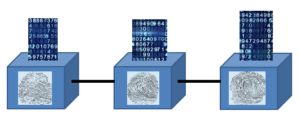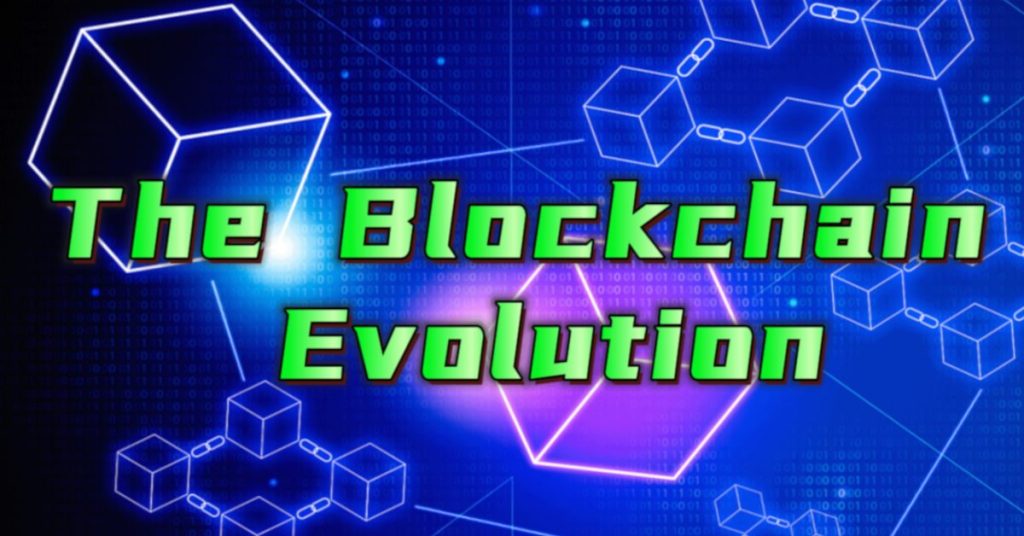Page Contents :
Started my first online course today, which is divided into 4 lessons. The first lesson is a brief history of blockchain.
The Brief History Of The Blockchain
For the general public, when it comes to blockchain, everyone thinks of Bitcoin and Satoshi Nakamoto, the “father of Bitcoin”. But like other technologies, blockchain does not appear out of thin air. The concept can be traced back to the early 1990s when the Internet had already appeared, and people began to worry about the integrity of digital documents, especially the inability to detect when and who changed these electronic records. There are many scammers on the Internet, they tampered with digital information and trick people into sending their private information to wire their money.
At that time, Stuart Haber and W. Scott Stornetta proposed a scheme that did not require a trusted central authority and incorporated the Hash tree in the design, puts a group of documents into a secured block, and then links a series of blocks to realize an immutable document timestamp system, that is, the first blockchain is created. And published their paper in 1991 – “How to Add Timestamp to Digital Documents”.

Hash tree (or Merkle tree) ![]() , the hash of any top node or root node is equal to the sum of the data of the left and right child nodes, because its structure presents a tree shape, so it is called a hash tree. The nodes of the hash tree are labeled with the encrypted hash of the data block. As long as any child node changes, the root hash will change. Therefore, the hash tree can verify the content of the data structure and ensure that the transaction information in the block is not tampered with.
, the hash of any top node or root node is equal to the sum of the data of the left and right child nodes, because its structure presents a tree shape, so it is called a hash tree. The nodes of the hash tree are labeled with the encrypted hash of the data block. As long as any child node changes, the root hash will change. Therefore, the hash tree can verify the content of the data structure and ensure that the transaction information in the block is not tampered with.
Blockchain 1.0: Bitcoin
It was not until 2008 that Satoshi Nakamoto himself or his team published a paper titled Bitcoin: A Peer-to-Peer Electronic Cash System ![]() , describing its core content: Bitcoin” electronic currency and its algorithm, and adopts the concept of the blockchain system of Stuart Haber and Scott Stoneta to develop the Bitcoin blockchain. It is this white paper that ushered in the era of blockchain.
, describing its core content: Bitcoin” electronic currency and its algorithm, and adopts the concept of the blockchain system of Stuart Haber and Scott Stoneta to develop the Bitcoin blockchain. It is this white paper that ushered in the era of blockchain.
A wide range of people think that Bitcoin is blockchain, and the blockchain is Bitcoin, which can be used interchangeably. This is a big misunderstanding! Blockchain is the underlying technology of Bitcoin, and Bitcoin is only one of the blockchains. To put it simply, the blockchain is like a cup filled with drinks, the drinks could be Bitcoin or Ethereum.
Blockchain 2.0: Smart Contract
Ethereum founder Vitalik Buterin saw some of the limitations of Bitcoin’s design and began to design open source protocols. In 2014, he published the white paper Ethereum: The Next Generation of Smart Contracts and Decentralized Application Platforms ![]() .
.
Ethereum is an open source public blockchain platform with a Smart Contract function. Ethereum not only requires distributed storage of data, but also needs to perform various Turing Complete calculations through the “Ethereum Virtual Machine” to process peer-to-peer contracts and realize the functions of smart contracts.
A virtual machine is a complete computer system that is simulated by software, has complete hardware system functions, and runs in an isolated environment. The Ethereum Virtual Machine (EVM) is a code operating environment built on the Ethereum blockchain.
Turing completeness guarantees the feasibility of calculation. All computable problems can be calculated. Such a virtual machine or programming language is called Turing complete, but it does not guarantee the efficiency of calculation and the comprehensibility and maintainability of the code.
A smart contract is a programmable contract. The clauses in the contract are written in computer code and can be automatically executed. It is easier to save the contract and run it by a certain algorithm. Given the input, the corresponding output is obtained, which greatly protects the contract execution. For example, if I buy a steak with $25 from Mr. Brown, the smart contract will ensure that there is $25 in my wallet to complete the transaction, otherwise, the transaction will be canceled, and the entire transaction process is irreversible and modified.
The introduction of smart contracts into the blockchain successfully opened the application of the blockchain outside the currency field, thus opening the blockchain 2.0 era.
Blockchain 3.0: Next Evolution
“Harvard Business Review” stated that “blockchain is not a disruptive technology, but a foundational technology.” Fundamentally, it is a new building block, and we can use it to create alternative systems.
Bitcoin and blockchain are increasingly getting people’s attention and deep interest. Blockchain-based payment methods are faster and more cost-effective, making the financial industry the first to use blockchain technology. In general, blockchain currently has the best application prospects in the financial field, and related technologies are also developing fastest.
In the long run, the application of blockchain in many fields has great potential. Various industries apply blockchain technology to form a new model and combine it with blockchain technology to form a new blockchain ecosystem.
In the next article, I will explore what decentralization is.




Very good post. I absolutely appreciate this website. Stick with it!
This is a very good tip especially to those new to the blogosphere.
Simple but very accurate info… Appreciate your sharing this one.
A must read article!
Feel free to surf to my blog :: googletest
That is very interesting, You are an overly professional blogger.
I’ve joined your rss feed and look forward to seeking
more of your wonderful post. Additionally, I’ve shared your website in my social networks
Here is my web-site … googletest